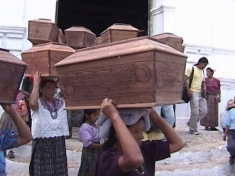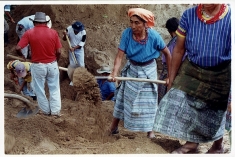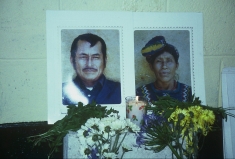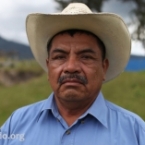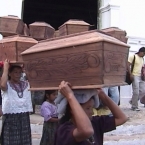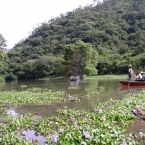The Water is Filled with Tears: River Guardian Carlos Chen
To celebrate our 30th anniversary, we’re devoting a new series to the people who have shaped, and are still shaping, river movements around the world. This month, we profile one of the world’s most inspiring River Guardians: a humble farmer-turned-activist from Guatemala named Carlos Chen.
Decades after the building of Guatemala’s Chixoy Dam, the events still boggle the mind.
The facts are now well-known: At the height of Guatemala’s civil war in the early ‘80s, a dam project – financed by the World Bank and the Inter-American Development Bank – was built on the Chixoy River. Indigenous Maya Achi residents, whose families had lived on the river for generations, were told to move. When they resisted, they were kidnapped, tortured and massacred – over 400 men, women and children in all.
Carlos Chen was one of the survivors. In 2007, we took a boat ride with Chen over the Chixoy reservoir in Guatemala – and brought along a camera.
In the video, Chen looks out at the grey waters that lap at the barren hillsides. He describes the fertile land now inundated beneath the surface, land where his people cultivated corn, beans, chiles and tomatoes and avoided – for many years – the worst of the civil war. He recalls the day when the government notified his village that a dam would be built, and recounts the disappearances and deaths that followed when his people resisted.
What he didn’t say in the video was that among those massacred were his wife, who was nine months pregnant, and his two children. There are some things, even decades after the fact, that are too hard to say.
Decades after the events he described, his village and dozens of others lie under the preternaturally still, algae-filled reservoir. The fertile floodplains have disappeared, along with the villagers who farmed them. The people were forced into settlements with poor houses and poorer land. 25 kilometers downstream, massive turbines send power to distant cities. “For us,” says Chen, “the water is filled with the tears and blood of our people.”
In too many cases, the story ends there. The dam is built, atrocities are committed, and the victims are scattered and silenced. And for nearly a decade after the 1982 massacre, Chen was silenced. Justifiably fearing for his life, he went into hiding, but despite his best efforts, he couldn’t keep his head down. The dead, perhaps, wouldn’t let him. In 1993, he went to Guatemala City and lodged the first formal complaint against the Guatemalan government for its crimes in his village, Rio Negro.
It was the beginning of a long battle that would involve decades of advocacy, studies, meetings, and exhumations. But Chen was never alone in his struggle: Upon his return to Rabinal, the major town in the region, he co-founded the Association for Development for the Maya-Achí Victims of Violence (ADIVIMA), a human rights group dedicated in part to bringing those responsible for the massacres to justice. After years of terror, survivors came out of the woodwork to demand justice for themselves and the loved ones they had lost.
As the movement gathered strength, more and more people came forward to tell where family members were buried, providing evidence in the case against the government and creating a compelling case for reparations.
After decades of fighting, history was made on January 16, 2014, when the US Congress forced the US directors of the World Bank and Inter-American Development Bank to report on reparations for the communities affected by Chixoy Dam.
Then, on November 8th, 2014, Carlos Chen Osorio and hundreds of community members were part of a historic event: Guatemala’s President Otto Perez Molina asked forgiveness for the government’s role in the social, cultural and environmental destruction caused by the Chixoy Dam. He presented the Reparations Executive Agreement, which offers more than US$154.5 million to fund individual compensations, infrastructure, development assistance and environmental restoration.
“The day the agreement on reparations was signed, we were all very happy,” says Chen now. “After so many years of fighting to get reparations, it was finally happening.”
Chen’s story is one of unimaginable suffering and persistence. It’s also a story that shows that a river is not just a channel for excess water; it’s a web that connects all the people who live along it and rely upon it. People are the river. The bonds forged on that river endure, even as that stretch of the river itself – and the land Chen’s people had known intimately for centuries – lies inundated and inaccessible.
Nine months after the decision, however, the Maya Achi have yet to see any money. “We are still hopeful,” Chen says. “We need to pressure the government and seek support from the international community.”
Reparations can never make up for all that was lost. But the developments of the past year give heart to river defenders everywhere. Justice is possible, thanks to activists like Carlos Chen.



